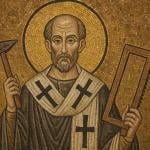Isaiah 55:7-13 is lovely poetry. It’s also a theologically rich passage. It starts with an exhortation to the wicked to abandon his own ways and thoughts, his conduct, goals, and plans (v. 7). If he does so, he can find pardon. Penitence is the only path to pardon. “Thoughts” and “ways” are hook words that lead into the following verse. The reason that the wicked man has to forsake his own ways and plans is that the Lord’s own ways... Read more



















